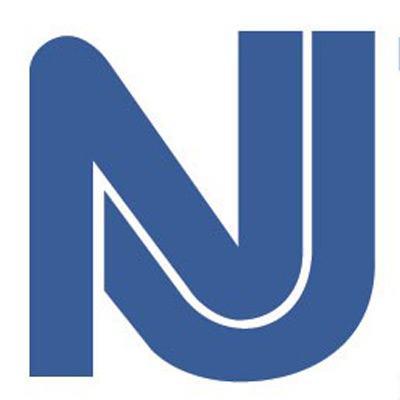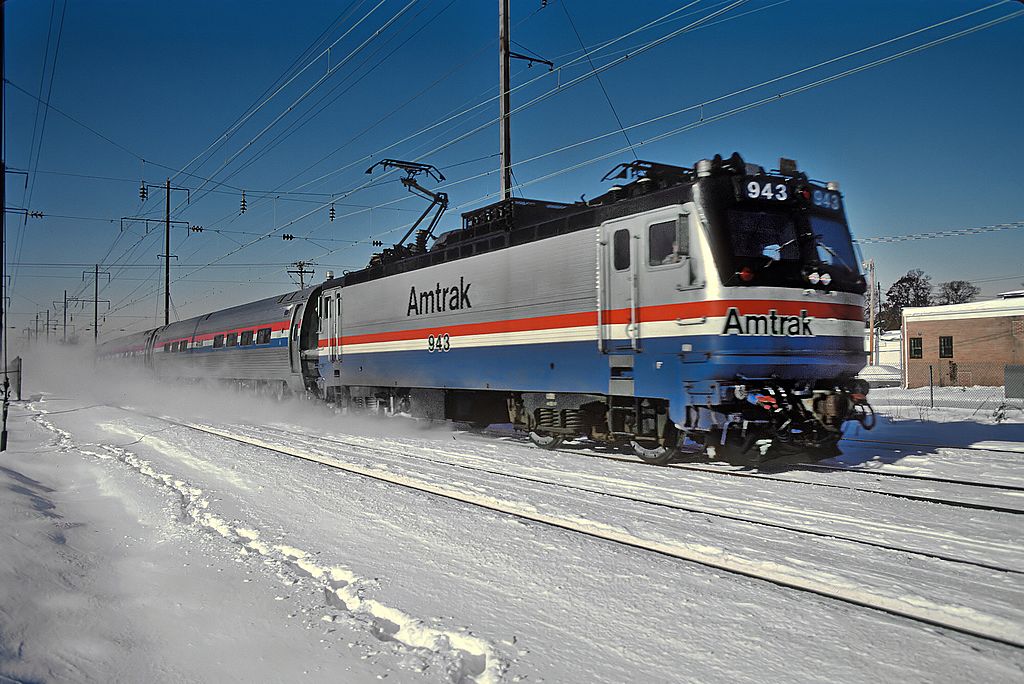Prototype Information: The AEM-7 is a twin-cab four-axle 7,000 hp (5.2 MW) B-B electric locomotive built by Electro-Motive Division (EMD) and ASEA between 1978 and 1988. The locomotive was a derivative of the Swedish SJ Rc4 designed for passenger service in the United States. The primary customer was Amtrak, which bought 54 for use on the Northeast Corridor and Keystone Corridor. Two commuter operators, MARC and SEPTA, also purchased locomotives, for a total of 65.
Amtrak ordered the AEM-7 after the failure of the GE E60 locomotive. The first locomotives entered service in 1980 and were an immediate success, ending a decade of uncertainty on the Northeast Corridor. In the late 1990s, Amtrak rebuilt 29 of its locomotives from DC to AC traction. The locomotives continued operating through the arrival of the final Siemens ACS-64 in June 2016. MARC retired its fleet in April 2017 in favor of Siemens Chargers, and SEPTA retired all seven of its AEM-7s in November 2018 in favor of ACS-64s.
Amtrak ordered the AEM-7 after the failure of the GE E60 locomotive. The first locomotives entered service in 1980 and were an immediate success, ending a decade of uncertainty on the Northeast Corridor. In the late 1990s, Amtrak rebuilt 29 of its locomotives from DC to AC traction. The locomotives continued operating through the arrival of the final Siemens ACS-64 in June 2016. MARC retired its fleet in April 2017 in favor of Siemens Chargers, and SEPTA retired all seven of its AEM-7s in November 2018 in favor of ACS-64s.
Road/Company Information: New Jersey Transit Corporation, marketed as NJ Transit (NJT), is a state-owned public transportation system serving the US state of New Jersey; along with portions of New York, Orange, and Rockland counties in New York State; and Philadelphia County in Pennsylvania. It operates bus, light rail, and commuter rail services throughout the state, notably connecting to major commercial and employment centers both within the state and in the adjacent major cities of New York and Philadelphia.
Covering a service area of 5,325 square miles (13,790 km2), NJT is the largest statewide public transit system and the third largest provider of bus, rail, and light rail transit by ridership in the United States, linking major points in New Jersey, New York, and Pennsylvania.
NJT also acts as a purchasing agency for many private operators in New Jersey, with numerous private operators receiving equipment from NJT (primarily buses) for route service within the state not controlled by NJT.
Covering a service area of 5,325 square miles (13,790 km2), NJT is the largest statewide public transit system and the third largest provider of bus, rail, and light rail transit by ridership in the United States, linking major points in New Jersey, New York, and Pennsylvania.
NJT also acts as a purchasing agency for many private operators in New Jersey, with numerous private operators receiving equipment from NJT (primarily buses) for route service within the state not controlled by NJT.
Brand/Importer Information: In 1924 Stephan Schaffan, Sr. founded the Atlas Tool Company in Newark, New Jersey. In 1933 his son, Stephan Schaffan, Jr., came to work for his father at the age of sixteen. Steve Jr. built model airplanes as a hobby and frequented a local hobby shop. Being an enterprising young man, he would often ask the owner if there was anything he could do to earn some extra spending money. Tired of listening to his requests, the hobby-store owner threw some model railroad track parts his way and said, "Here, see if you can improve on this".
Atlas has made a ton of wonderful products throughout the years and we often get questions one whether we have run a certain road name on a particular model. It should be noted that Atlas locomotives and rolling stock are greatly appreciated for their superior operating and running characteristics. Atlas products are also well known for their outstanding collectability not only due to their superior prototypical workmanship, details and decoration, but because there are relatively so few of them made. Each and every production run has been carefully built to market demand, meaning almost every piece in any given run is sold out by Atlas on arrival or shortly thereafter, thus creating a built in collectors market.
Atlas has made a ton of wonderful products throughout the years and we often get questions one whether we have run a certain road name on a particular model. It should be noted that Atlas locomotives and rolling stock are greatly appreciated for their superior operating and running characteristics. Atlas products are also well known for their outstanding collectability not only due to their superior prototypical workmanship, details and decoration, but because there are relatively so few of them made. Each and every production run has been carefully built to market demand, meaning almost every piece in any given run is sold out by Atlas on arrival or shortly thereafter, thus creating a built in collectors market.
Item created by: gdm on 2016-11-09 09:52:14. Last edited by gdm on 2020-05-07 00:00:00
If you see errors or missing data in this entry, please feel free to log in and edit it. Anyone with a Gmail account can log in instantly.
If you see errors or missing data in this entry, please feel free to log in and edit it. Anyone with a Gmail account can log in instantly.











